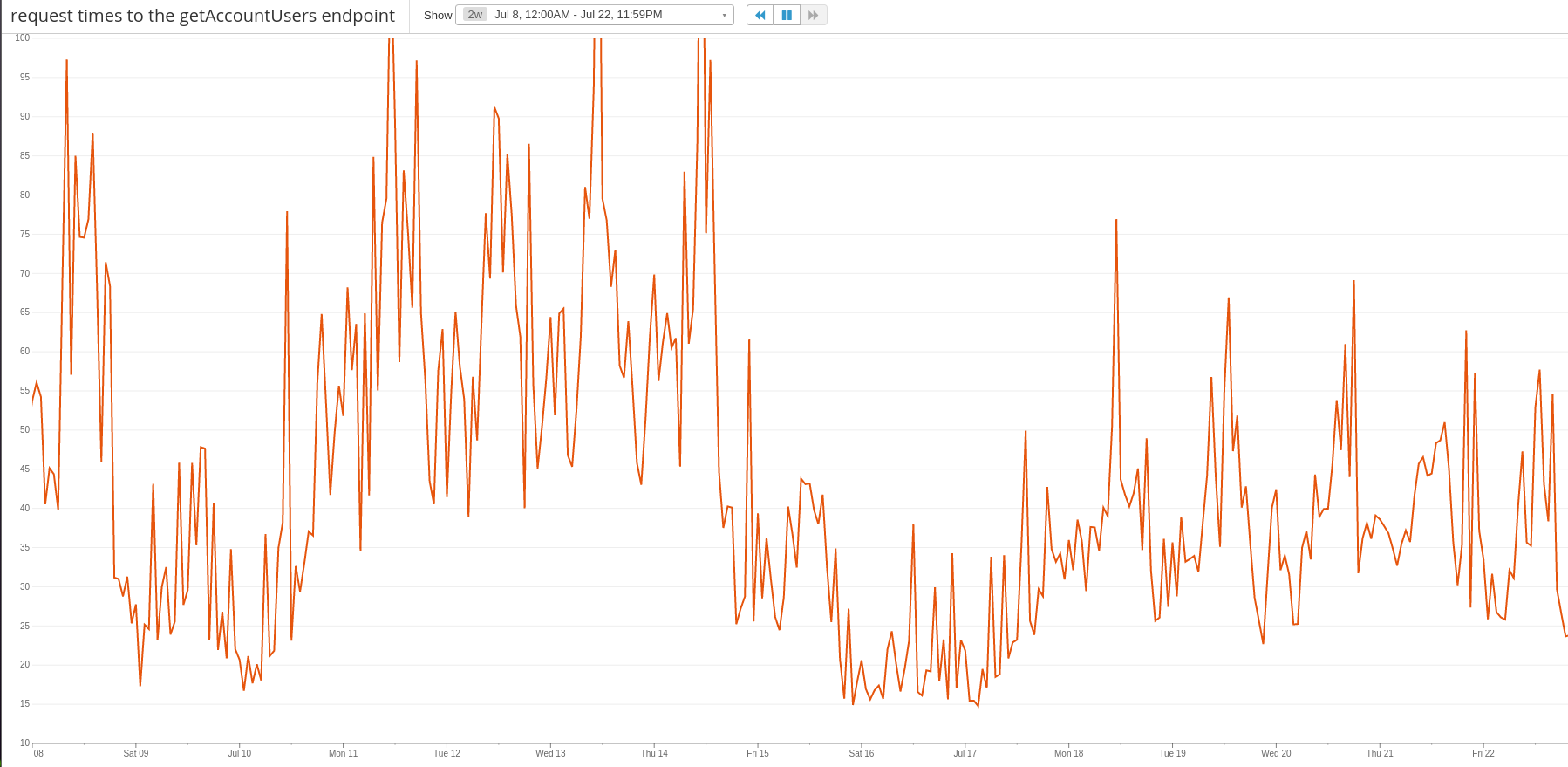
Speeding up RESTful Services in Play Framework
Joshua Reynolds
Reading time: about 5 min
Topics:
{
"attributes": "https://documents.lucidchart.com/documents/ff0069a7-bf80-4f29-bdf0-aeb6cc8da593/attributes",
"created": "2015-07-16T04:46:35Z",
"creator": "https://users.lucidchart.com/users/102485935",
"documentUsers": "https://documents.lucidchart.com/documents/ff0069a7-bf80-4f29-bdf0-aeb6cc8da593/users",
"edit": "https://www.lucidchart.com/documents/edit/ff0069a7-bf80-4f29-bdf0-aeb6cc8da593",
"id": "ff0069a7-bf80-4f29-bdf0-aeb6cc8da593",
"invitations": "https://documents.lucidchart.com/documents/ff0069a7-bf80-4f29-bdf0-aeb6cc8da593/invitations",
"pages": "https://documents.lucidchart.com/documents/ff0069a7-bf80-4f29-bdf0-aeb6cc8da593/pages",
"saved": "2016-08-17T16:33:58Z",
"size": 241278,
"template": "https://documents.lucidchart.com/documents/ff0069a7-bf80-4f29-bdf0-aeb6cc8da593/template",
"thumb": "https://www.lucidchart.com/documents/thumb/ff0069a7-bf80-4f29-bdf0-aeb6cc8da593/0/241278/NULL/400",
"title": "Basic Use Case Diagram",
"uri": "https://documents.lucidchart.com/documents/ff0069a7-bf80-4f29-bdf0-aeb6cc8da593",
"usersWithAccess": "https://documents.lucidchart.com/documents/ff0069a7-bf80-4f29-bdf0-aeb6cc8da593/users/access"
}1. java.net.URI is slow. We can get faster type safety.
Below is an example of a RESTful link class containing a URI as its only member. A typical REST resource would have many similar members.case class FooLink(uri: java.net.URI) Consequently, we chose to do away with the URI parser and other overhead of java.net.URI. We replaced it with a new class, a FastURI that basically wraps a String. We control the generation of the links on the back-end, so we can guarantee that they conform to the pattern for which the java.net.URI parser was testing.
Consequently, we chose to do away with the URI parser and other overhead of java.net.URI. We replaced it with a new class, a FastURI that basically wraps a String. We control the generation of the links on the back-end, so we can guarantee that they conform to the pattern for which the java.net.URI parser was testing.
case class FastURI(uri: String)
case class FooLink(uri: FastURI)
new URI(FastURI.uri). Type safety is preserved with the FastURI type, and we still get the benefits of the URI parser in java.net.URI, but only when we need it. We use Scala, but this principle will apply to any JVM language.
2. Play's functional syntax for JSON combinators may be elegant, but it's also costly.
Another choke point for our endpoints was our JSON serialization. We use a fork of Play 2.3.8, and we discovered some unnecessary work being done by Play's api.libs.functional.syntax._ when used to generate a JSON serializer. A common Play JSON formatter looks like this:case class Foo (
do: FooLink,
re: FooLink,
mi: FooLink,
fa: FooLink
)
object Foo {
implicit val format = Format[Foo] (
(JsPath / “do”) and
(JsPath / “re”) and
(JsPath / “mi”) and
(JsPath / “fa”) )
(apply, unlift(unapply))
}implicit val reads: Reads[Foo] = Reads[Foo] { json =>
for {
do <- (json \ "do").validate[FooLink]
re <- (json \ "re").validate[FooLink]
mi <- (json \ "mi").validate[FooLink]
fa <- (json \ "fa").validate[FooLink]
} yield {
Foo(do, re, mi, fa)
}
}
implicit val writes: Writes[Foo] = Writes[Foo] { foo =>
Json.obj(
"do" -> foo.do,
"re" -> foo.re,
"mi" -> foo.mi,
"fa" -> foo.fa
)
}
implicit val format = Format(reads,writes)Result: a 1.5x improvement.
As a result of our tackling these two inefficiencies, we saw around a 50% decrease in the time it takes to create and serialize our REST objects to JSON. This figure is the result of a benchmark of a REST object with ten links tested before and after these optimizations. In addition, we saw great improvement in the endpoint that originally caught our attention. This graph shows the weeks before and after we released the change: As we grow and serve an ever-increasing user base, it is important to consider our scalability. We are always searching for slow code that we can refactor before it wakes up our Ops team in the middle of the night due to a service that is overburdened and timing out. And most importantly, we want our services to be completely dependable as more and more people share their ideas visually with Lucidchart and Lucidpress.
As we grow and serve an ever-increasing user base, it is important to consider our scalability. We are always searching for slow code that we can refactor before it wakes up our Ops team in the middle of the night due to a service that is overburdened and timing out. And most importantly, we want our services to be completely dependable as more and more people share their ideas visually with Lucidchart and Lucidpress.About Lucid
Lucid Software is the leader in visual collaboration and work acceleration, helping teams see and build the future by turning ideas into reality. Its products include the Lucid Visual Collaboration Suite (Lucidchart and Lucidspark) and airfocus. The Lucid Visual Collaboration Suite, combined with powerful accelerators for business agility, cloud, and process transformation, empowers organizations to streamline work, foster alignment, and drive business transformation at scale. airfocus, an AI-powered product management and roadmapping platform, extends these capabilities by helping teams prioritize work, define product strategy, and align execution with business goals. The most used work acceleration platform by the Fortune 500, Lucid's solutions are trusted by more than 100 million users across enterprises worldwide, including Google, GE, and NBC Universal. Lucid partners with leaders such as Google, Atlassian, and Microsoft, and has received numerous awards for its products, growth, and workplace culture.